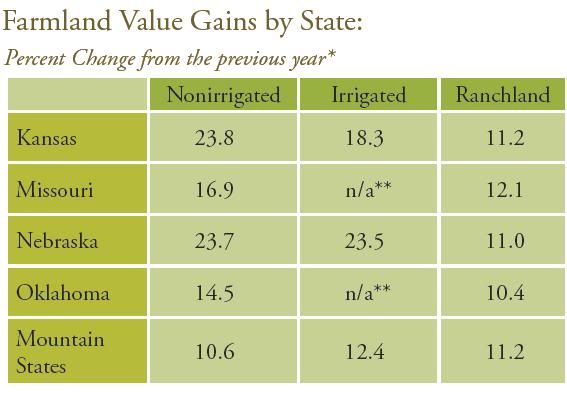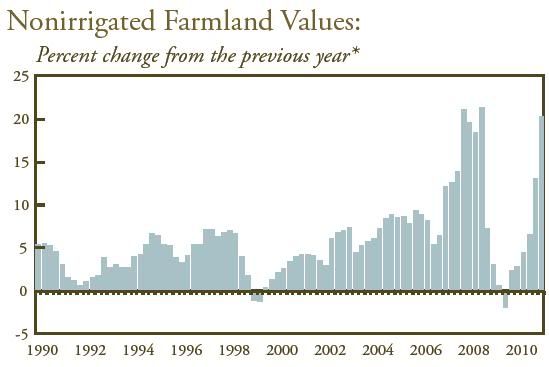
The Federal Reserve Bank of Kansas City has released its report on farmland prices from the first quarter of 2011. The Tenth Federal Reserve District includes Colorado, Kansas, Nebraska, Oklahoma, Wyoming, the northern half of New Mexico, and the western third of Missouri.

Here are a few key points from the report:
- Oklahoma bankers were concerned that a severe drought could slash yields, lower farm income and lead to a deterioration in loan repayment rates.
- Some District bankers expressed concerns that elevated crop and livestock prices might fall and narrow profit margins.
- Many bankers reported weak loan demand as producers paid for higher fertilizer, fuel and feed costs with cash.
- Nebraska and Kansas enjoyed the strongest cropland value gains, with nonirrigated cropland rising roughly 24 percent during the past year.
- Ranchland values also climbed sharply, rising 11 percent above year-ago levels.
- Booming energy exploration lifted land lease revenues and farmland values, specially in the mountain states and Oklahoma.
- Compared to last year, District cash rental rates for irrigated cropland rose an average of 17 percent, close to the 20 percent annual gain in land values. Rental rates varied widely across the region, according to moisture and soil conditions.
- Most bankers felt that farm income would hold at elevated levels, although a small number felt that rising input costs or poor crop and grazing conditions would limit incomes during the next three months.
- More bankers reported lower demand for operating loans despite higher farm input costs.
- Interest rates on operating loans edged down further, averaging 6.6 percent, while interest rates on farm real estate loans held at an average of 6.3 percent.

BANKER COMMENTS from the TENTH DISTRICT:
“Current agricultural land prices are a concern to me as I am afraid they may be a bubble in the making.” – North Central Missouri
“Volatile times in the ag industry. Cash flows work well at today’s crop prices, but not if prices fall.” – Southeast Nebraska
“We have had a lot of oil and gas leases in the last three months, paying a higher rate per acre.” – South Central Kansas
source